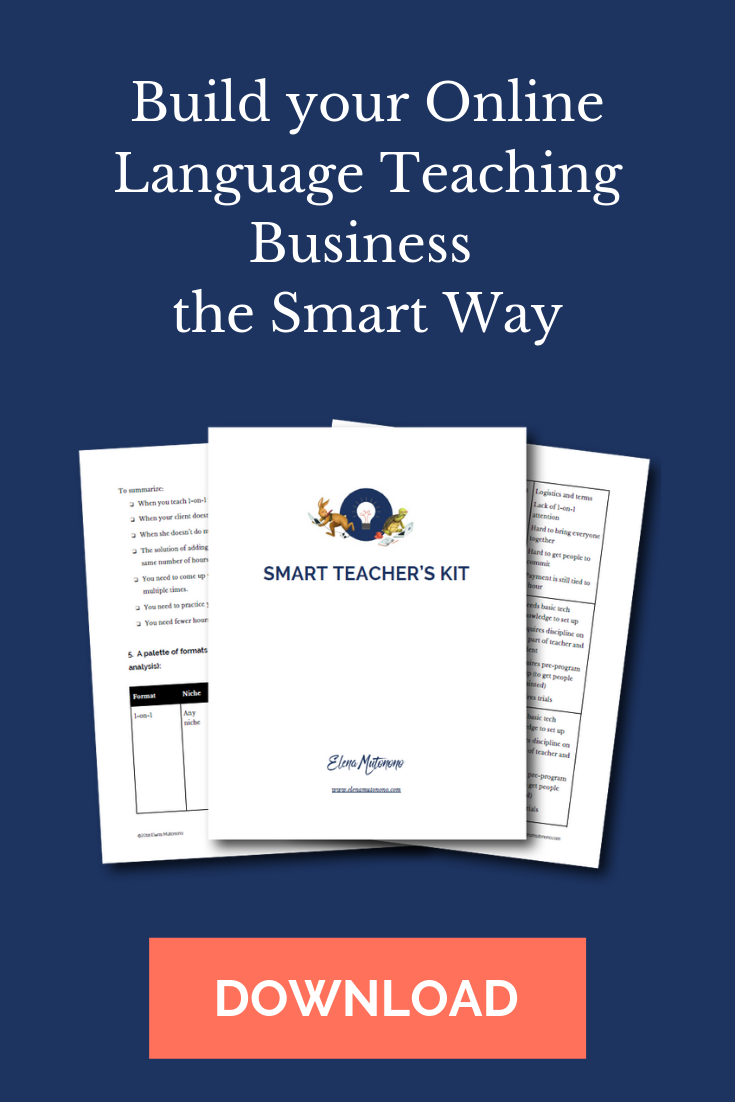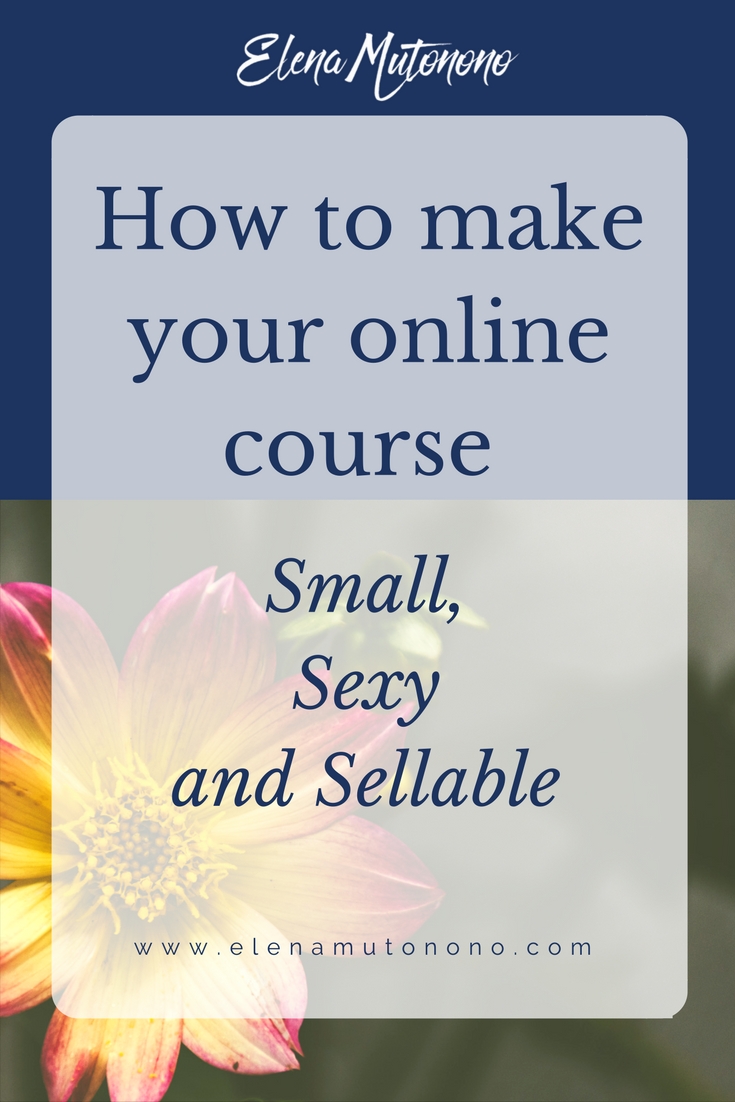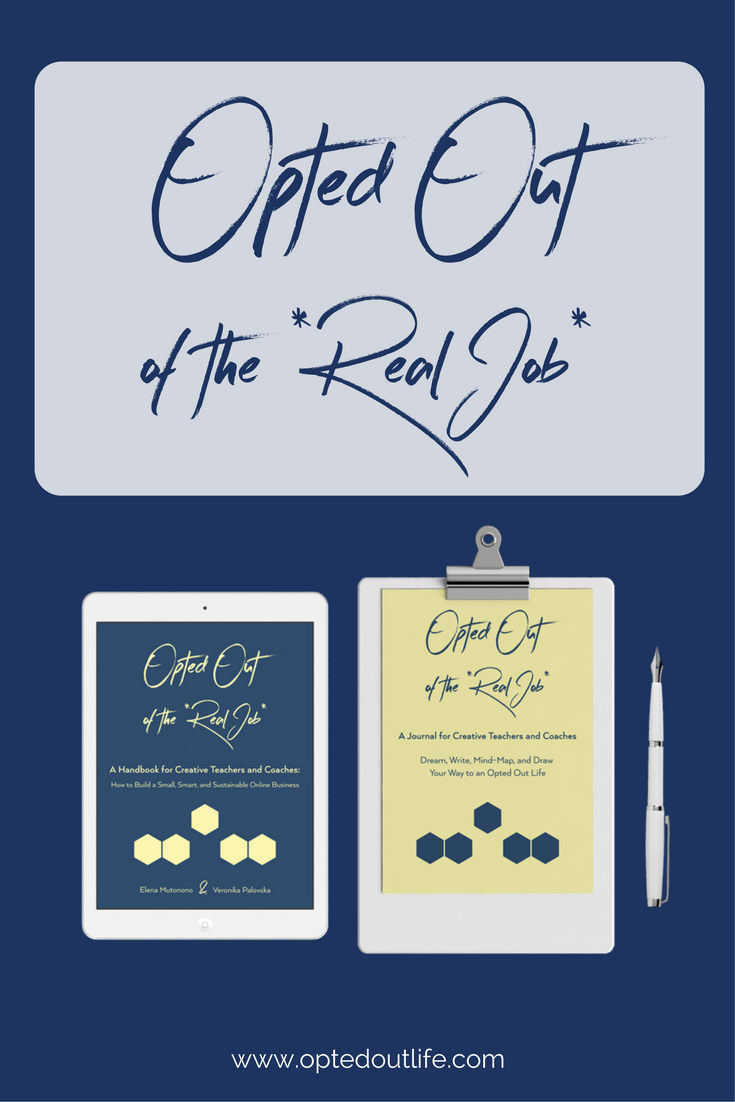A few years ago when Veronika Palovska and myself decided to run an online summit for language teachers, we wanted something unconventional. Our goal was to make it more effective and less overwhelming than regular online summits we’d attended.
After some initial research I discovered that my unconventional approach wasn’t common practice, and most online summit trainers insisted that a “successful” summit must be:
- Big: “you have to have a decent number of speakers. Simply having 4 or 5 won’t do.” (source).
- Free (initially): for instance, 5-8 hours of live content released daily and available for free during the first 24 hours, then several paid upgrade options. (source).
- Overwhelming: the upgrades usually include a lot of bonus features that are worth thousands of dollars.
- Labor-intensive: recording massive amounts of content, creating upgrades and purchasing tools that will make this humongous machine work.
- High-investment: apart from time, most summits require large financial investments into Facebook or Google ads. (source).
- High learning curve: considering that such virtual summits are massive scale productions, they require a lot of technical knowledge and expertise because running Facebook ads just as an example isn’t an intuitive process.
If a simple research made my head spin, what would happen when I did run a summit like this? My options were:
- Forget about running summits.
- Run a summit according to suggested blueprints and burn out.
- Run a smaller, more manageable summit.
I went for option 3, but I didn’t have a blueprint for it, so I created my own, and this is what this post is about.
Give yourself permission to be small.
It’s not easy to go against the grain and choose to be small when everyone’s best practice suggests you do things differently, that bigger is better and that when you think small, you’re not ambitious enough at best and a pathetic loser at worst. Maybe you’re not even a legit business person because legit business people strive for more, and you’re running an expensive hobby.
Most of us are struggling to stay afloat in the sea of scarcity messages. In her book The Soul of Money, Lynne Twist identifies “more is better” as one of the toxic myths of scarcity: “The chase of more is better — no matter what our money circumstances — demands our attention, saps our energy, and erodes our opportunities for fulfillment. When we buy into the promise that more is better, we can never arrive.”
What if small isn’t deficient, unsuccessful, pathetic and shameful? What if “small is the new big,” as Seth Godin* put it? As I began researching on that subject I discovered a number of successful online business owners whose conscious choice of small made them more fulfilled and in the end attracted more business their way.
Then I gave myself permission to follow my instinct and create a small online summit where I would focus on building a community and sparkling connection between people rather than creating intricate sales funnels and generating 6-figure reports. I created my own small summit rules and followed them:
- Focus on one topic. Unlike other summits where all speakers come and share their tips on different subjects, I chose 1 topic a year and focused on it.
- Instead of 8 speakers a day I would choose 1. 1 main speaker a day and 3-4 altogether. I chose speakers whose values align with mine and whose opinions do not contradict each other.
- I would break 1-hour presentations into smaller, manageable 15-20-minute chunks and pre-record them.
- I would pre-record several 10-minute stories of online teachers who implemented a specific strategy and were successful with it. I added 2-3 short stories per day.
- I would add a forum (outside of Facebook) to allow participants and speakers to join and interact with each other without social media distractions.
- I would add daily live Q&A sessions to give participants a chance to ask questions and connect with other online teachers.
- I would make my Summit paid so the people who joined were motivated to watch, learn and participate.
Connecting your work with your values.
Through the process of creating a small online summit I confirmed that in order to be authentic and compelling our marketing has to align with our values. If my values are not aligned with the “best known marketing practices,” then such practices are not best for me or for my audience. In fact, they become destructive.
Since the Summit is a part of my overall marketing strategy, I had to find a way to make the Online Teacher Summit speak for my values, not against them. Here are some values that are important to me in business and how our summit reflected them:
- Small is beautiful. Bigger isn’t always better.
- Focus and clarity matter. 1 topic for the Summit make it more applicable and actionable.
- Less is more. Less content makes more impact because it’s more memorable.
- Less overwhelm means more action. Fewer speakers empower participants to act.
- More inspiration means more motivation. Peer stories resonate and remind someone that they can do it, too.
- Quality over quantity. Choose main speakers who have a lot of professional experience to share.
- Sufficiency over scarcity. I believe every piece of content we absorb with intention has the power to change our business forever. More content doesn’t lead to change, setting an intention does.
***
Want to get access to all the 2021 Summit materials? Check it out.
***
The tools I used to run and promote a Summit.
I’ve used simple tools that are familiar to my audience:
- Vimeo to upload pre-recorded presentations and interviews.
- Teachable to organize all video and audio presentations and release them daily.
- Slack to host our forum.
- Zoom for live Q&As.
- Acuity Scheduling to pre-book events and send reminders.
- Canva to create a workbook for the event.
- Jotform for feedback forms, suggestions and Q&A questions.
I’d already been using most of these for my business before running the Summit, so all I had to do was upgrade to a premium plan to unlock the features I needed for the Summit.
I did not use Facebook ads. In the first year I asked for affiliates but found the hassle not worth the time or money. In a conventional Summit, each speaker (out of 30+) becomes your affiliate and they promote your event to their audiences to make money for you and for themselves.
When I chose a smaller Summit I knew I wouldn’t be able to generate as much through my affiliates, and I made peace with it. Instead, I relied on word of mouth and requested my current clients and community members to write about the summit on their social media feeds and share the link.
I rely on the power of this community to move others to action. I believe that when most of my time is spent showing up, sharing and giving generously to this community, I can ask for help when marketing an event and people are willing to contribute, as a small token of their appreciation.
There are no strings attached or manipulation language. I ask for help and I receive it in abundance. This year was the first year when I brought in 124 participants without affiliate partners. I know affiliates work wonders for some, but they are not necessary when your goals go beyond the numbers.
The inspiration to be small.
Several amazing business people inspire me to run a small, smart, sustainable and intentional online business. I want to share some of their work with you and give you permission to do the same.
The magic of being small and sustainable helps your business grow without anxiety and obsession with numbers and results. It allows you to make changes and enjoy your life more, instead of cramming it between your work tasks.
I wish you all the best on your journey!
- Seth Godin, Small is the new big.
- Bernadette Jiwa, What story can people tell themselves about you?
- Alexandra Franzen, The smallest thing.
- Paul Jarvis, Company of one.
- Regina Anaegionu, Be small.
- Derek Sivers, Anything you want.

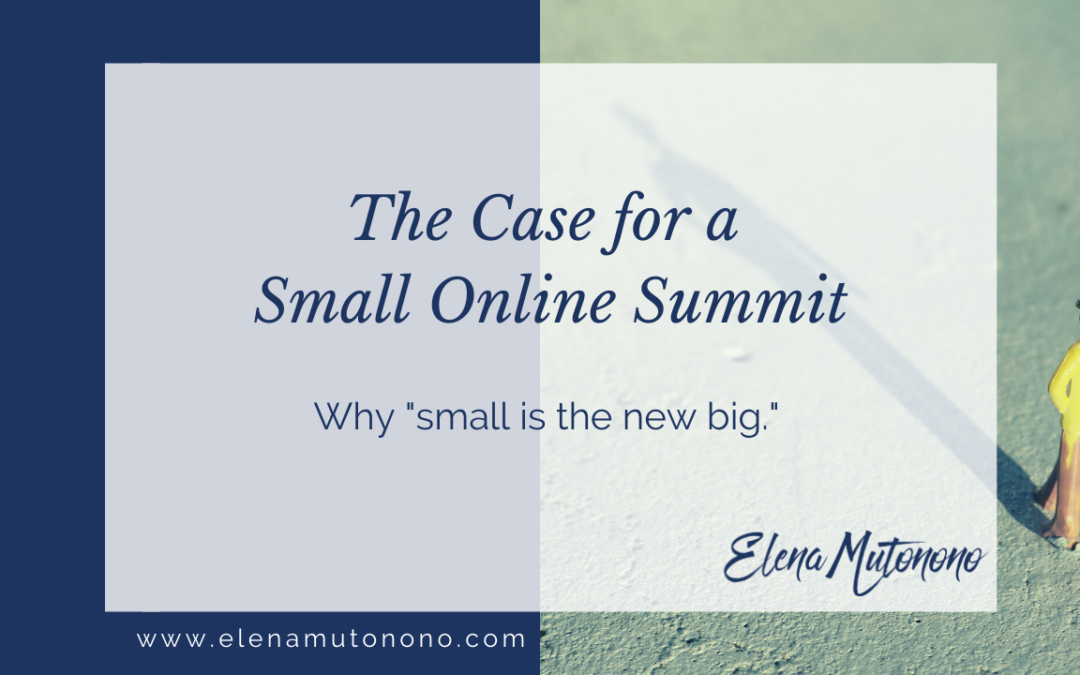
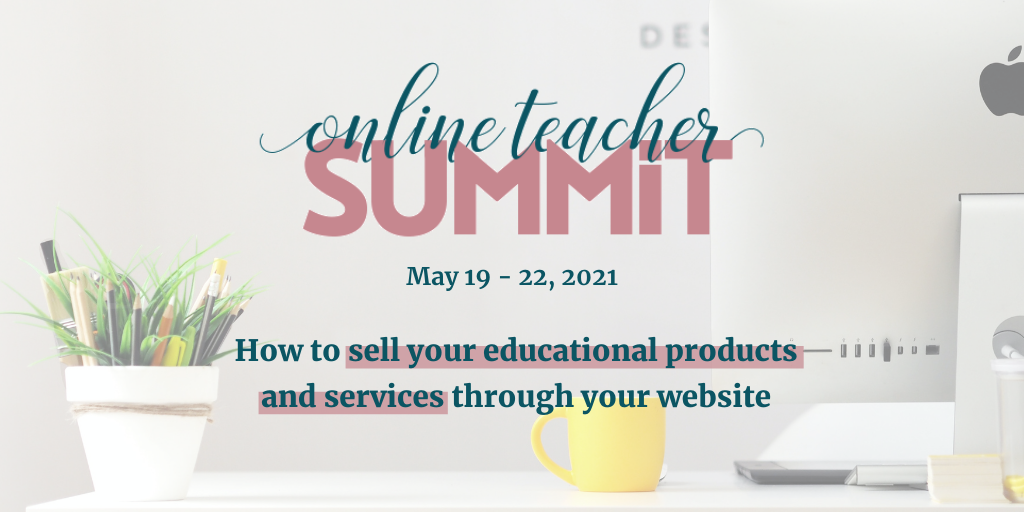
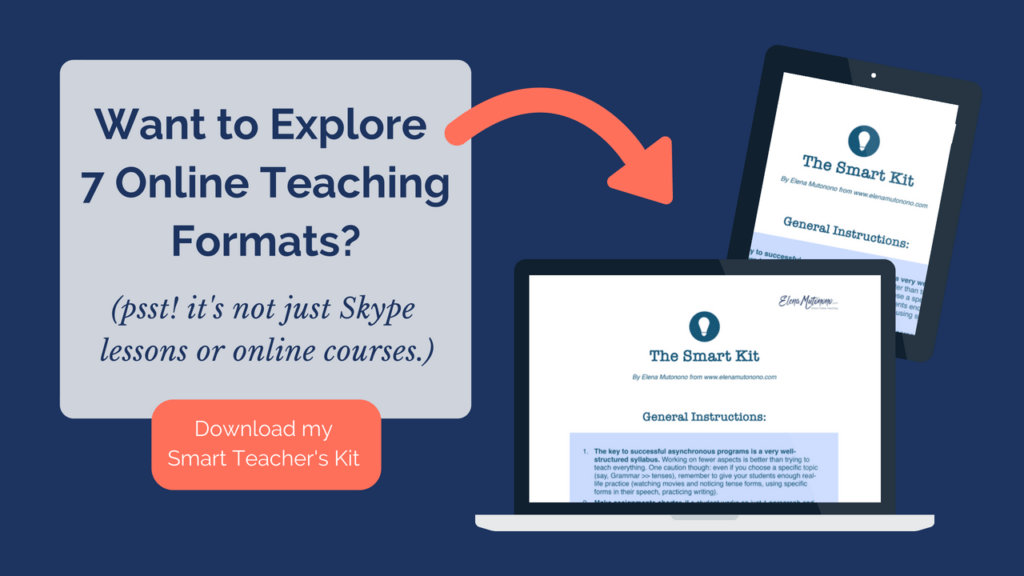
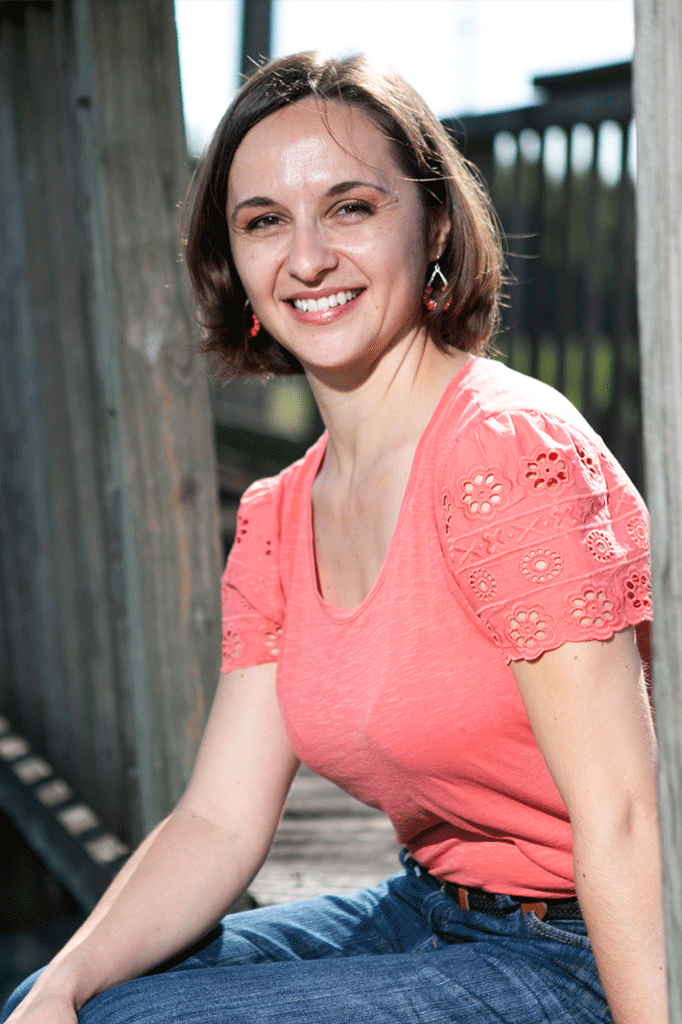 Welcome to my nook where *Big Magic* happens. My name is Elena Mutonono, I help small business owners package their services as digital products and sell them online. I want you to work smarter, not harder. Increase your impact beyond your current face-to-face clients. Grow your business as you reach more people all over the world.
Welcome to my nook where *Big Magic* happens. My name is Elena Mutonono, I help small business owners package their services as digital products and sell them online. I want you to work smarter, not harder. Increase your impact beyond your current face-to-face clients. Grow your business as you reach more people all over the world.
